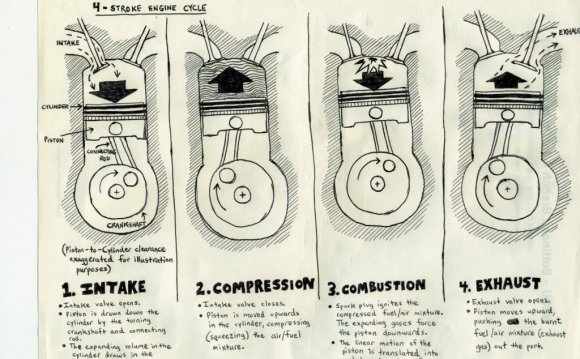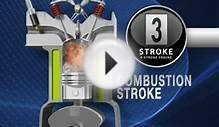
Compression ratio
The difference between the volume of air and fuel mixture sucked into the cylinder by the induction stroke and its eventual volume when compressed fully is called the compression ratio.
If the mixture is reduced to one-ninth of its original volume, the engine has a compression ratio of 9:1.
The cycle starts with the induction stroke. With the exhaust valve closed, a downward movement of the piston sucks fuel mixture from the carburettor into the cylinder. The mixture enters through the inlet valve, which has been opened by the camshaft turning.
The upward movement of the piston which follows is the compression stroke. The exhaust valve remains closed and the inlet valve also closes, so the mixture in the cylinder is compressed by the rising piston into a small space known as the combustion chamber usually in the cylinder head or in the top of the piston.
A spark from the sparkplug ignites the mixture and causes it to expand rapidly, driving the piston down in the power stroke.
As the piston rises once more, the inlet valve remains closed but the exhaust valve opens. This movement allows the waste products of the burned mixture to escape through the exhaust system, and is called the exhaust stroke.
The camshaft continues to rotate, the exhaust valve closes and the inlet valve opens and the four-stroke cycle starts again.
RELATED VIDEO












